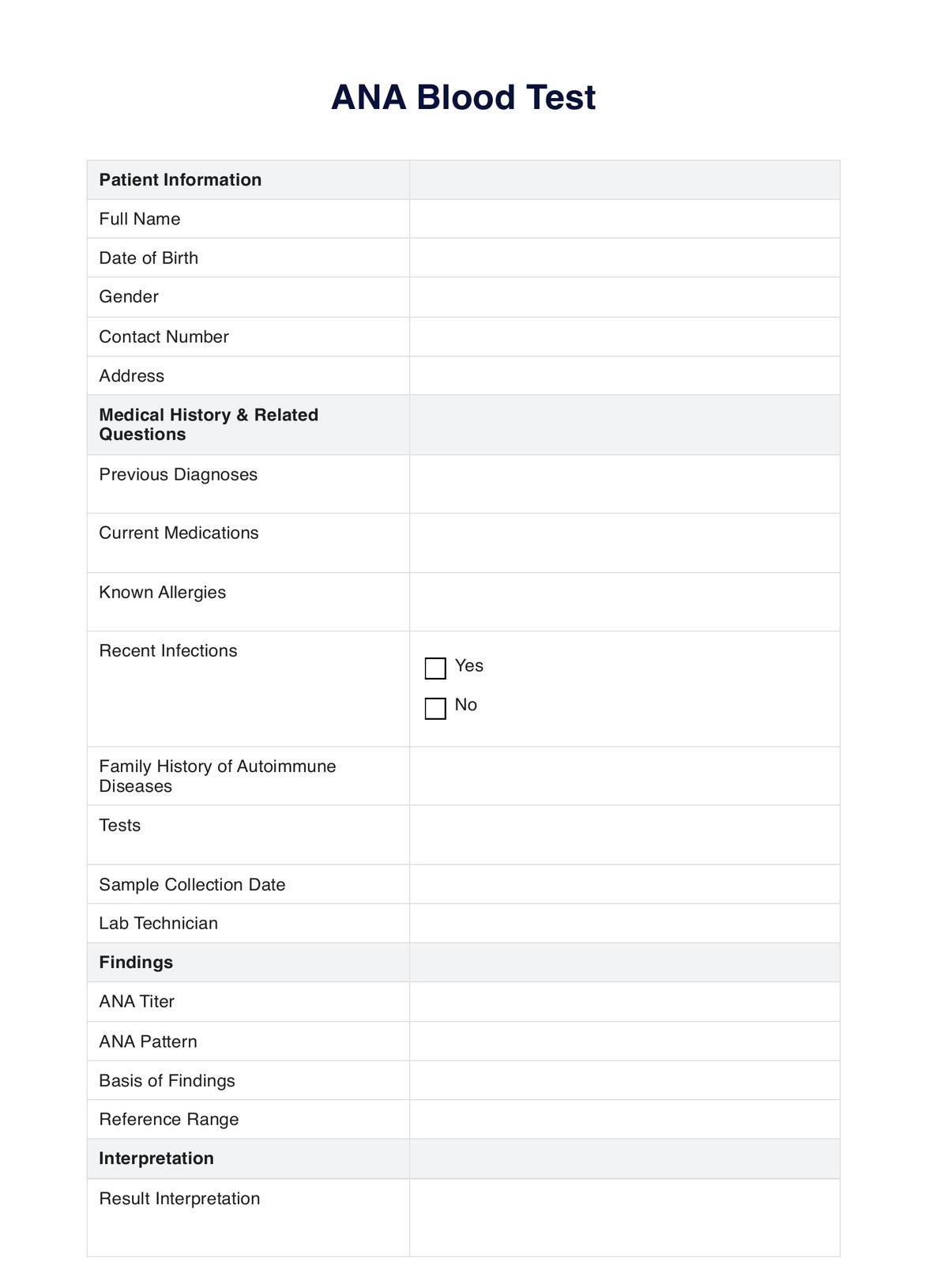The ANA Blood Test is primarily used to detect autoimmune disorders, especially systemic lupus erythematosus and other connective tissue diseases.

Discover the significance of the ANA Blood Test with Carepatron. Elevate your healthcare practice with our advanced patient portal and telehealth services.
The ANA Blood Test is primarily used to detect autoimmune disorders, especially systemic lupus erythematosus and other connective tissue diseases.
Carepatron's telehealth platform allows for real-time consultations, enabling healthcare professionals to discuss test results and provide interpretations to patients remotely, ensuring timely and efficient care.
Absolutely! Carepatron's online patient portal prioritizes patient data security, employing advanced encryption methods to safeguard all information.
EHR and practice management software
*No credit card required
Free
$0/usd
Unlimited clients
Telehealth
1GB of storage
Client portal text
Automated billing and online payments